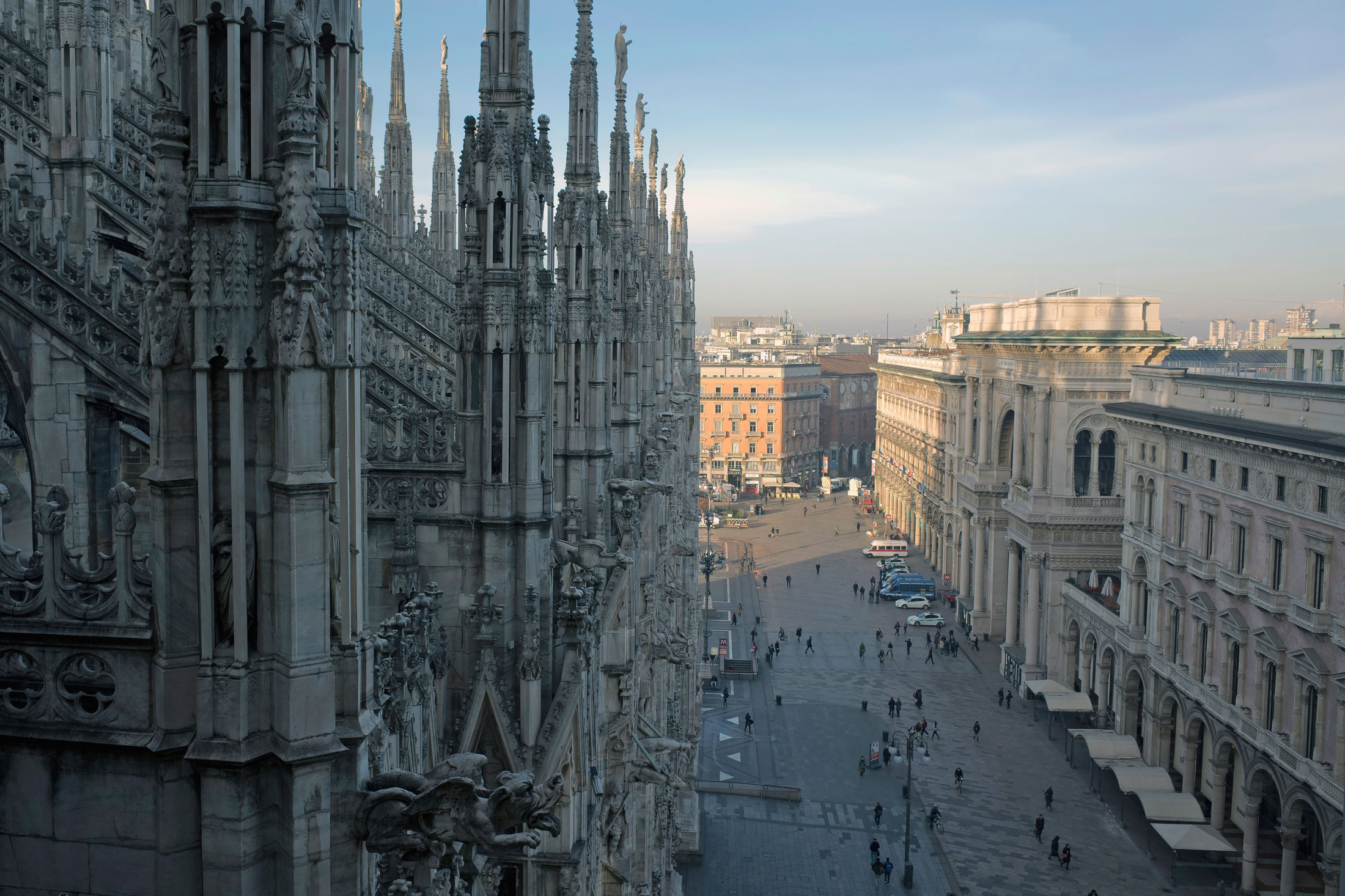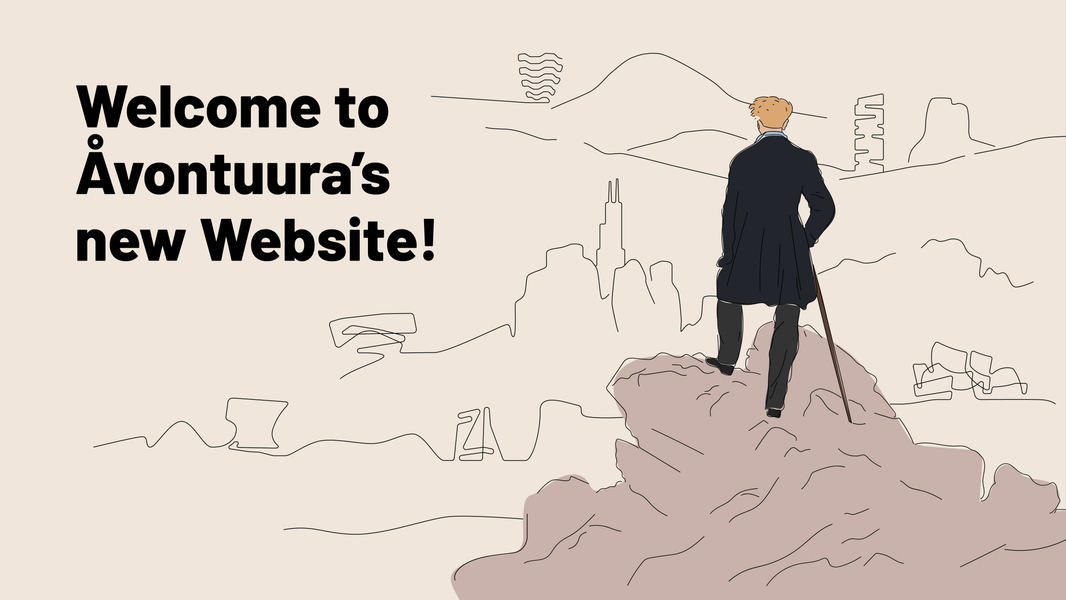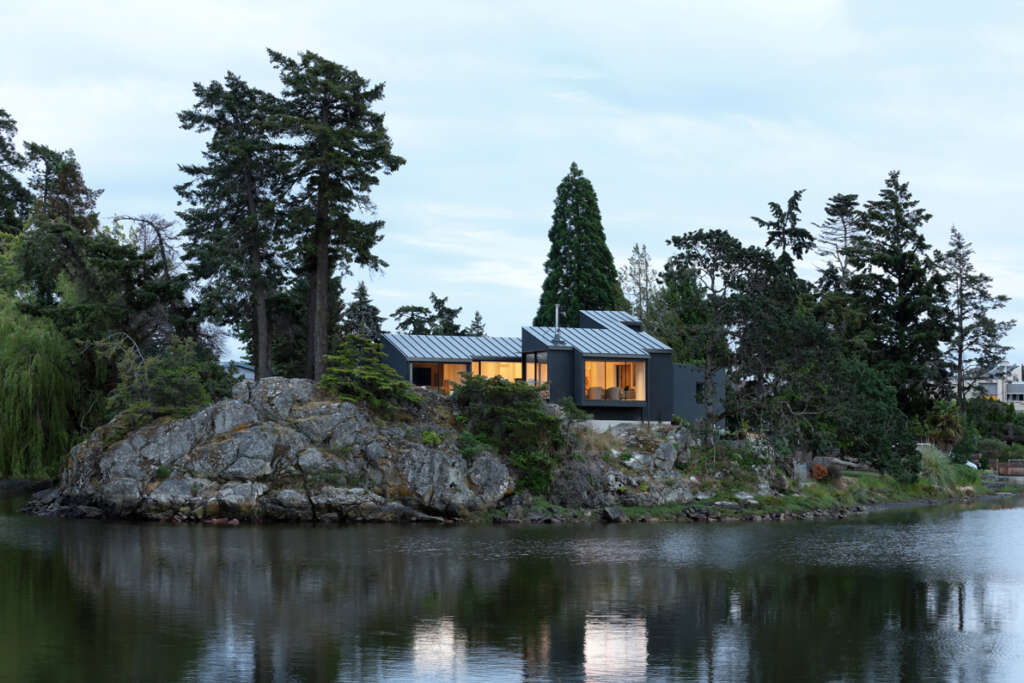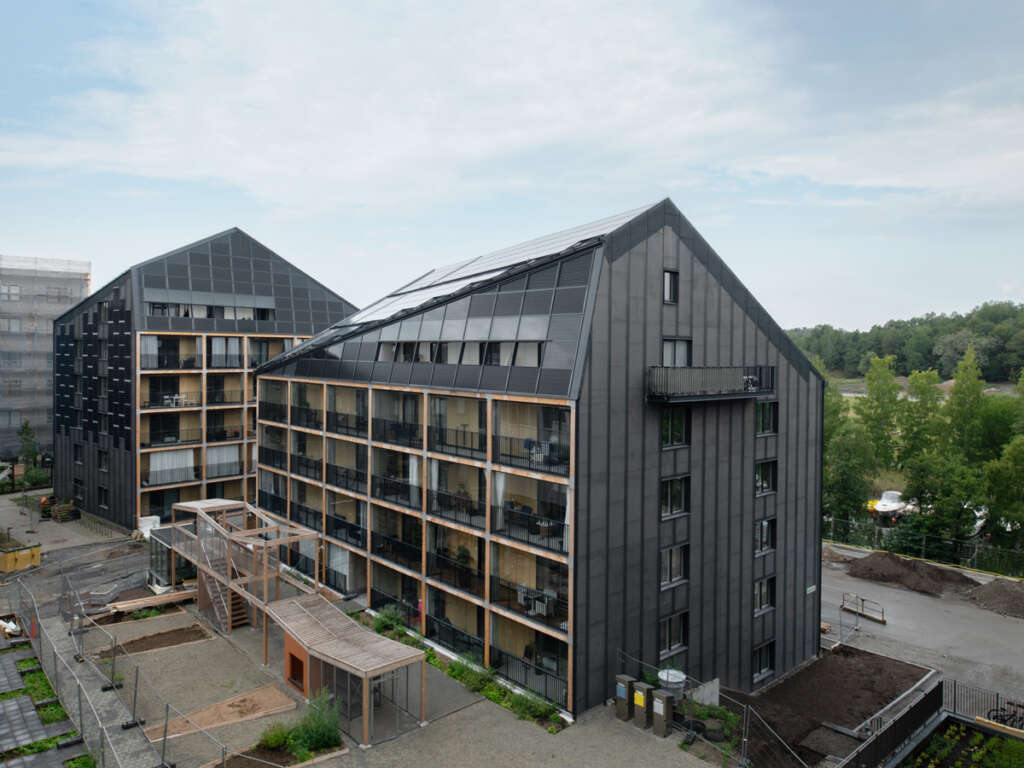 © Nikita Andreev[/caption]
Updated: 5 August 2018
The fashion capital of Italy, Milan is home to an incredible number of architectural riches that range over a thousand years of history. From the glories of the Roman Empire to the middle ages, and early modernism, it's a city rich in culture and iconic landmarks. But what makes Milan so amazing is that it's not stuck in its past. There are a vibrancy and an ethos that speaks to the future that can be felt on its streets and contemporary architecture.
Check out Milan's new and old #mustseearchitecture below.
© Nikita Andreev[/caption]
Updated: 5 August 2018
The fashion capital of Italy, Milan is home to an incredible number of architectural riches that range over a thousand years of history. From the glories of the Roman Empire to the middle ages, and early modernism, it's a city rich in culture and iconic landmarks. But what makes Milan so amazing is that it's not stuck in its past. There are a vibrancy and an ethos that speaks to the future that can be felt on its streets and contemporary architecture.
Check out Milan's new and old #mustseearchitecture below.
Duomo di Milano
The largest church in Italy and the third largest in the world, the Duomo di Milano took over six centuries to complete. Its construction was overseen from historical figures like Archbishop Antonio da Saluzzo in 1386 to Archbishop Carlo Borromeo in 1571, and even Napoleon Bonaparte in 1805. The plan of the cathedral consists of 4 naves (the central part of a church), intersected by a transept, then a choir and apse. Its rooftop is equally impressive with the exposed pinnacles and spires creating an almost forest-like atmosphere.
Practical Information
Architect: Simone da Orsenigo Built: 1386-1965 Type: Cathedral Style: Gothic Address: Piazza del Duomo, 20122 Milano MI, Italy Open to the Public: Yes Cost: € 3 Hours: Daily (8:00am – 7:00pm) Website: www.duomomilano.it/en/Galleria Vittorio Emanuele II
Built by Italian architect Giuseppe Mengoni between 1865 and 1867, the Galleria Vittorio Emanuele II is Italy's oldest shopping mall. The mall is housed within a four-storey arcade in the heart of the city and consists of two glass barrel vaults framed in cast iron. A glass dome in the center of the gallery is the main feature and connects Milan's two most iconic landmarks: the Duomo di Milano and the Teatro alla Scala.
Practical Information
Architect: Giuseppe Mengoni Built: 1865-1867 Type: Shopping Mall Style: Renaissance Revival Address: Piazza del Duomo, 20123 Milano MI, Italy Open to the Public: Yes Cost: € 3 Hours: Daily (8:00am – 7:00pm) Website: www.turismo.milano.it/Teatro alla Scala
Widely regarded as one of the leading opera and ballet theatres in the world, La Scala is built on the former location of the church of Santa Maria alla Scala from which it takes its name. From 2002 to 2004, the theatre successfully underwent renovations led by renowned Swiss architect Mario Botta that included completely rebuilding the stage and expanding the back-of-house.
Practical Information
Architect: Giuseppe Piermarini with renovations by Mario Botta (2004) Built: 1778 Type: Opera House Style: Neoclassical Address: Via Filodrammatici, 2, 20121 Milano MI, Italy Open to the Public: Yes Website: www.teatroallascala.org/en/Santa Maria delle Grazie
The Santa Maria delle Grazie ("Holy Mary of Grace") is a church that contains a mural of "The Last Supper" by Leonardo da Vinci. Located in the refectory of the convent, the church is listed as a UNESCO World Heritage site.
Practical Information
Architect: Donato Bramante, Guiniforte Solari Built: 1497 Type: Church Style: Gothic, Renaissance Address: Piazza di Santa Maria delle Grazie, 20123 Milano MI, Italy Open to the Public: Yes Hours: Varies, please visit website. Website: legraziemilano.it/Museo del Novecento
Opened in 2010, the Museo del Novecento is a museum of twentieth-century art near the Piazza del Duomo. Formerly Mussolini's Arengario (government building), the building was heavily renovated and features amongst others, an impressive spiral staircase.
Practical Information
Architect: Griffini, Magistretti, Muzio, and Portaluppi Renovated: 2010 Type: Museum Address: Via Guglielmo Marconi, 1, 20122 Milano MI, Italy Open to the Public: Yes Cost: € 10 Hours: Daily (9:30am – 7:30pm, 10:30pm on Thursdays and Saturdays) Website: www.museodelnovecento.org/it/Castello Sforzesco
Built in the 15th century by the Duke of Milan, the castle eventually became one of the largest citadels in Europe at the time. With a quadrangular form, the castle was once accessed by a drawbridge and has two distinct towers; the Torre della Corte on the north, and the Torre del Tesoro on the west. In the late 19th century, the castle was heavily rebuilt and now houses the city's art collections.
Practical Information
Architect: Luca Beltrami Built: 1360 Type: Castle Style: Renaissance Address: Piazza Castello, 20121 Milano MI, Italy Open to the Public: Yes Cost: € 5 Hours: Daily (7:00am – 7:30pm) Website: www.milanocastello.it/itBasilica di Sant’Ambrogio
The Basilica di Sant’Ambrogio is one of the oldest churches in Milan. Built by St. Ambrose, a prominent bishop in the 4th-century, the building has gone under several renovations and reconstructions to its current state, a 12th-century Romanesque church. Part monastery and part church, the building is characterized by its two towers that symbolize the division in the church between the Monks and the Canons.
Practical Information
Builder: St. Ambrose Built: 379-1099 Type: Church Style: Romanesque Address: Piazza Sant'Ambrogio, 15, 20123 Milano MI, Italy Open to the Public: Yes Cost: Free Hours: Daily (10:00am – 12:00pm, 2:30pm – 5:30pm) Website: www.milanocastello.it/itPinacoteca di Brera
The Pinacoteca di Brera is a public gallery housing some of the most important paintings in Italy. In the 1700's, the building was an astronomical observatory, national library, and botanical garden and was a center for architectural study amongst other discourses.
Practical Information
Architect: Francesco Maria Richini Built: 1776 Type: Public Gallery Style: Neoclassical Address: Via Brera, 28, 20121 Milano MI, Italy Open to the Public: Yes Cost: € 10 Hours: Tuesday - Sunday (8:30am – 7:15pm) Website: pinacotecabrera.org/Giardino Della Guastalla
Conceived by Paolo Ludovica Torelli, the Countess of Guastall, the Giardino Della Guastalla is one of the smallest parks in Milan. It was conceived after Torelli was widowed and she founded a monastery to honor young deceased nobles. It didn't become public until 1939 when the City expropriated it.
Practical Information
Built: 1555 Type: Gardens Style: Baroque Address: Via Francesco Sforza, 20122 Milano MI, Italy Open to the Public: Yes Cost: Free Hours: Daily (7:00am – 8:00pm) Website: www.comune.milano.it/Bagatti Valsecchi Museum
Filled with renaissance furnishings, decorative arts, and tapestries, the Bagatti Valsecchi Museum is a historic house museum in downtown Milan.
Practical Information
Built: 1887 Type: Private Residence, Museum Style: Renaissance Revival Address: Via Gesù, 5, 20121 Milano MI, Italy Open to the Public: Yes Cost: € 9 Hours: Daily (1:00am – 5:45pm) Website: museobagattivalsecchi.org/San Carlo al Corso
Designed by architect Carlo Amati, the neoclassical church was built in honor of Saint Charles Borromeo during the 16th century at the end of the bubonic plague.
Practical Information
Architect: Carlo Amati Built: 1847 Type: Catholic Church Style: Neoclassical Address: Piazza S. Carlo, 20122 Milano MI, Italy Open to the Public: Yes Website: www.sancarloalcorso.it/scc/Cimitero Monumentale
Opened in 1886, the Cimitero Monumentale is a large cemetery in Milan and features several Roman and gothic monuments and tombs. Among noted Italian industrialists buried there, the cemetery also hosts approximately 800 Jewish-Milanese who were killed by the Nazis during World War II.
Practical Information
Architect: Carlo Maciachini Built: 1886 Type: Cemetery Style: Romanic, Gothic Address: Piazzale Cimitero Monumentale, 20154 Milano MI, Italy Open to the Public: Yes Cost: Free Hours: Tuesday - Sunday (8:00am – 6:00pm) Website: www.comune.milano.it/Arco della Pace
Although its history dates back to the Roman Empire, the current gate was built under the rule of Napoleon and marks the point where the Strada del Sempione enters Milan. The road still connects Milan to Paris where soldiers and travelers would cross through the Alps via the Simplon Pass.
Practical Information
Architect: Luigi Cagnola Built: 1838 Type: Gateway Arch Style: Neoclassical Address: Piazza Sempione, 20154 Milano MI, ItalyPlanetario di Milano
With over 100,000 visitors per year, the Planetario di Milano is the largest planetarium in Italy. The inside of the dome is characterized by a 1930's silhouette of the Milan skyline.
Practical Information
Architect: Piero Portaluppi Built: 1930 Type: Planetarium Style: Neoclassical Address: Corso Venezia, 57, 20121 Milan MI, Italy Open to the Public: Yes Hours: Vary, refer to the website. Website: www.comune.milano.it/Torre Velasca
Standing over 100 metres tall, the Tower Velasca is a modern interpretation of an Italian castle. Its unique design and prominent location near the Duomo di Milano makes it an unmissable figure on the Milan skyline. The tower was designated a heritage building by the city in 2011.
Practical Information
Architect: Ernesto Nathan Rogers, Lodovico Belgiojoso, Enrico Peressutti, Gian Luigi Banfi (BBPR) Built: 1958 Type: Office, Residential Style: Brutalist Address: Piazza Velasca, 3/5, 20122 Milano MI, Italy Website: www.lombardiabeniculturali.it/La Torre Arcobaleno
Originally a simple concrete water tower, the structure was saved from demolition leading up to the 1990 World Cup hosted in Italy as a way to promote urban heritage. The design stands out for its intricate and colourful use of ceramic tiles.
Practical Information
Architect: Original Designer 6R5 Built: 1964, Renovated 1990, 2015 Type: Water Tower Address: Via Giuseppe Ferrari, 18, 20154 Milan MI, Italy Website: www.torrearcobaleno.it/Fondazione Prada
Located in a former industrial complex on the south side of the city, the Fonadzione Prada is a collection of art spaces including a tower, pavilion, and cinema. Designed by OMA, the buildings are meant to promote the interactive benefits of art and architecture.
Practical Information
Architect: OMA Built: 1998 Type: Museum, Cultural Center Address: Largo Isarco, 2, 20139 Milano, Italy Open to the Public: Yes Hours: Wednesday to Monday: 10:00am - 8:00pm Cost: 10,00 € Website: www.fondazioneprada.org/Feltrinelli Porta Volta
Designed by Swiss architects Herzog & de Meuron, the Porta Volta is both an office building for the Fondazione Giangiacomo Feltrinelli and a strategic urban design that stitches together the existing boulevard, public square, and archaeological remains that exist on the site. The design is characterized by its long elegant form, ample glazing, and pitched roof.
Practical Information
Architect: Herzog & de Meuron Built: 2016 Type: Office, Restaurant, Gallery Address: Viale Pasubio, 5, 20154 Milano, Italy Open to the Public: Yes Hours: Daily: 9:00am - 6:00pm Website: www.fondazionefeltrinelli.it/City Life Residences
Consisting of seven different buildings, this housing complex in Milan was designed by Zaha Hadid architects with construction occurring between 2009 and 2013. The design is characterized by the long sweeping balconies with elements of wood that pop out of the white fibre cement panels. The balconies and terraces offer fantastic views of the City.
Practical Information
Architect: Zaha Hadid Built: 2013 Type: Housing Address: 20145 Milano Open to the Public: Yes Website: www.city-life.it/en/Generali Tower
Located within the CityLife masterplan, the tower actually sits above the Tre Torri subway station and offers new residential, office, commercial, and public spaces. Also designed by Zaha Hadid, the buildings primary design features a twisting floor plate as it moves up the building.
Practical Information
Architect: Zaha Hadid Built: 2017 Type: Office Address: Piazza Tre Torri, 20145 Milano, Italy Open to the Public: YesApple Piazza Liberty
A rising glass box complete with a cooling waterfall, the design for Apple's flagship store in Milan beautifully integrates the building with the public square that sits above it. Complete with terraced seating and plenty of Instagram-worthy photo opportunities, this design by Foster + Partners is a masterclass in architecture and urban stitching.
Practical Information
Architect: Foster + Partners Built: 2018 Type: Plaza, Retail Address: Piazza del Liberty, 1, 20121 Milano MI, Italy Open to the Public: Yes Hours: Daily (10:00am - 9:00pm) Website: www.apple.com/it/retail/piazzaliberty/Città delle Culture (MUDEC)
Città delle Culture was a highly controversial project at the time of its construction. Noted architect David Chipperfield actually walked away from the project over concerns about the quality of the museum's floors. Despite this, the building acts as a form of industrial archaeology as it reforms an old industrial yard into workshops, studies, and creative spaces.
Practical Information
Architect: David Chipperfield Built: 2015 Type: Museum Address: Via Tortona, 56, 20144 Milan, Italy Open to the Public: Yes Hours: Tuesday to Sunday: 9:30am - Varies, Monday: 2:30pm - 7:30pm Cost: 5,00 € Website: www.mudec.it/ita/Bosco Verticale
Dubbed "The Vertical Forest", Bosco Verticale are two residential towers featuring over 800 trees, and 16,000 plants and shrubs. Aside from the seemingly aesthetic quality of the tower, the trees and vegetation create an urban ecosystem for its residents, producing oxygen, filtering airborne particulates, and reducing noise pollution.
Practical Information
Architect: Stefano Boeri Built: 2014 Type: Housing Address: 20124 Milan, Italy Open to the Public: YesUniCredit Tower
The headquarters for Italy's largest bank, the tower is the tallest building in the country and features a spire covered completely in coloured LED's.
Practical Information
Architect: César Pelli Built: 2012 Type: Office Address: Tower A, Piazza Gae Aulenti, 3, 20154 Milano MI, Italy Open to the Public: Yes Website: www.unicredit.it/Casa della Memoria
The Casa della Memoria (House of Memory) is a collection of associations dedicated to the preservation and democracy of Italy. The building is strikingly unique with the facades completely filled with portraits, paintings, and images that document the post-war history of Milan.
Practical Information
Architect: Baukuh Built: 2015 Type: Office Address: Via Federico Confalonieri, 14, 20124 Milan MI, Italy Open to the Public: Yes Hours: Daily (9:00am – 5:00pm), Weekends (10:00am - 6:00pm)Parco della Portello
Located on the site of a former Alfa Romeo factory, the park is made up of two artificial hills built on rubble and excavated earth.
Practical Information
Architect: Charles Jencks, LAND Built: 2016 Type: Park Address: Viale Renato Serra, 20149 Milano, Italy Open to the Public: Yes Hours: Daily: 7:00am - 8:00pm Website: www.comune.milano.it/Stadio Giuseppe Meazza (San Siro)
Known to football fans as San Siro, the building is a category four UEFA stadium (ranked 1 through 4, 4 being elite) and is one of the most famous in Europe. It has hosted several major European football matches including six games at the 1990 Fifa World Cup, as well as the 1965, 1970, 2001, and 2016 European Cups. With a capacity over 80,000, San Siro is home to football clubs A.C. Milan and Inter Milan.



